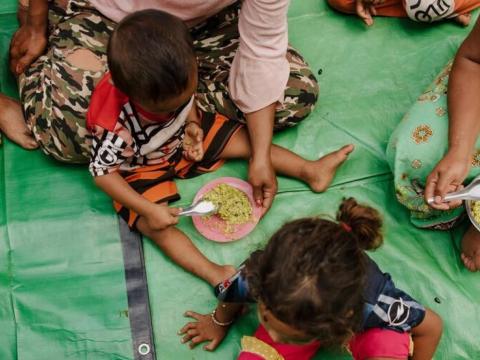From MDGs to SDGs: Why new global goals can reach the furthest behind first

For many decades now, the world has produced more than enough food to feed everyone on earth. What has eluded global ingenuity, however, is devising a mechanism to ensure every single person on earth has access to enough food to eat. As a result, 800 million people still go to bed hungry every night.
If you were to poll everyone in the world, it is likely nearly all would agree that this state of affairs should not be allowed to continue and something must be done to tackle the glaring inequity of hunger in an age of plenty. The question is: What is to be done?
A decade and a half ago, the United Nations did something. It ushered into existence the Millennium Development Goals (MDGs), which created the first road map for tackling poverty and hunger on a global scale.
Taking stock on progress after 15 years, we can see substantial gains have been made. For example, the number of people living in extreme poverty has been cut in half, while the proportion of undernourished people in the developing world has fallen to around 12 per cent. These statistics represent millions of lives saved.
The struggle against global poverty is far from over. More than a billion people earn less than $1.25 a day, which is the definition of extreme poverty. Most of these people, some 800 million, are undernourished – unable to afford enough food to lead a healthy and active life.
It is children that suffer most. Their young bodies and minds are less able to endure periods of hunger. It is estimated one in every four of the world’s children are stunted. These children will grow into adults with diminished physical strength and mental capacity that will haunt them throughout their lives.
So what is to be done now, as the MDGs enter their final days? The world has changed quite a bit over the past 15 years. The divide between the ‘developed’ and ‘developing’ countries is no longer as clear cut as it once was. Nowadays some of the worst poverty can be found in countries such as India and Brazil, but these countries are also generating vast wealth. Inequality within countries is just as glaring as inequality between countries.
A fresh approach is needed. The Sustainable Development Goals (SDGs) due to be adopted this month by world leaders will seek to eradicate poverty by 2030 – as well as tackling inequality, violence and environmental destruction. So why can the SDGs finally succeed in ending extreme poverty and hunger?
To start with, the new goals are universal. These means all countries – as well as aid agencies, businesses and the public, working in collaborative partnership – will implement this bold agenda for a transformed world.
Crucially, they are also ‘zero goals’. While the Millennium targets sought to get us half way to the goal of ending poverty and hunger, the new goals are designed to finish the job. To get to zero. This means a deliberate effort will be required by policy makers to reach those living on the extreme margins of society.
For World Vision, this means reaching the most vulnerable children in the world’s hardest places to live. They are the children in remote areas, in the worst urban slums, in the midst of intractable conflicts and buffeted by droughts or flooding caused by the effects of climate change.
We believe sustainable development starts and ends with healthy, nourished and well-educated children free from all forms of violence – and the SDGs represent an unprecedented opportunity to get us there within this generation.
This time around, eradicating poverty is everyone’s responsibility. Everyone everywhere can take action to promote equality and become global citizens of a better world for children.
Chris Derksen-Hiebert is the Director of Public Policy for World Vision International. World Vision is a global Christian relief, development and advocacy organisation dedicated to working with children, families and communities to overcome poverty and injustice. World Vision serves all people, regardless of religion, race, ethnicity or gender.